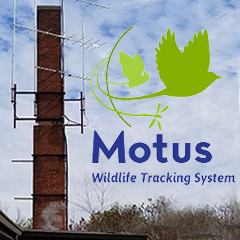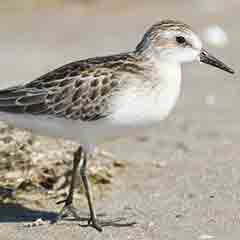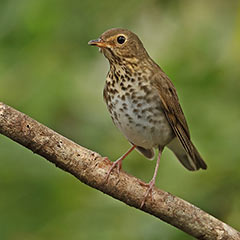Birds play critical roles in our ecosystems. They are pollinators, pest controllers, scavengers, seed dispersers, and perhaps most importantly, they act as valuable indicators of change in their ecosystems. Sensitive to habitat change, birds provide an early alarm when habitat health is deteriorating. Birds are signaling a broader crisis in the natural world. North American bird populations have been declining drastically, with scientists estimating the continent to have lost 29% of its total avian population. That’s a loss of nearly 3 billion birds in the last half century. Many bird species need our urgent conservation action to avoid extinction.
Taking to the Skies
By tracking movement patterns, like where birds go during migration and how long they remain there, researchers can pinpoint the greatest threats to vulnerable species and make more informed conservation management decisions. To that end, Zoo New England has joined the Motus Wildlife Tracking System to track and ultimately save wildlife. The Motus system is an international collaborative network of researchers using radio telemetry to track the migratory movements of birds, bats and large insects over vast distances. Zoo New England has collaborated with the Massachusetts Audubon Society to install a receiving station (pictured here) in one of the highest points of land near Boston. Currently, this is one of only a few receivers in the Metro Boston area.
The philosophy behind Motus is that we’re all working together. The community science-based system combines the collective impact of individual projects by researchers, educators, organizations, and citizens into one collaborative effort. Data acquired from the animals’ receivers is added to a centralized database, where it’s filtered, analyzed, archived, and disseminated to all researchers and organizations in the network.
Tiny Tech
To be tracked properly, animals are fit with tiny nanotag tracking devices that transmit their location using a network of hundreds of coordinated receiving stations strategically scattered throughout the western hemisphere. Any nanotagged animal that flies within nine or 10 miles of a receiving station will be automatically documented. Unlike older transmitter technology, these nanotags are small enough to be placed on insects as little as monarch butterflies and larger dragonflies.
By tracking animals during migration, Motus data can answer specific questions about their biology and conservation—like which habitats they rely on most during migration, what factors determine successful reproduction, and where they face the highest mortality. The tracking information will help identify target areas for habitat improvement.
Currently, the bird species identified by Zoo New England's tower include the least sandpiper, semipalmated sandpiper, and Swainson’s thrush.
Learn more about the Motus Wildlife Tracking System.




